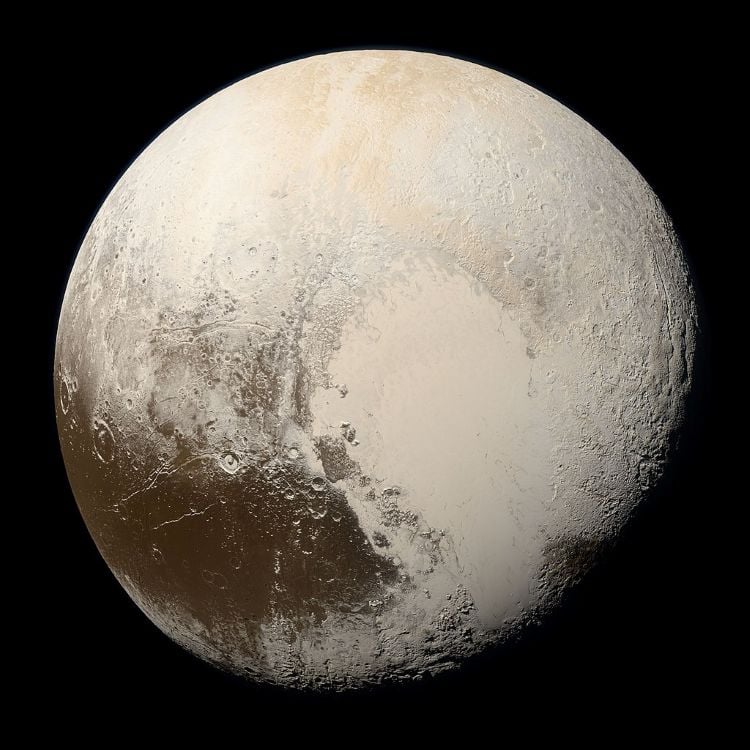A recent study published in *The Planetary Science Journal* has revealed intriguing evidence of cryovolcanism in the Kildaze caldera, located in Pluto’s Hayabusa Terra region. Researchers aimed to understand the dwarf planet’s current geological activity and how it can remain dynamic despite its distance from the Sun. This investigation could provide critical insights into the geological processes shaping Pluto.
The team analyzed images captured by NASA’s New Horizons spacecraft during its historic flyby of Pluto in July 2015. They compared these images with various cryovolcanic sites on Pluto, such as Virgil Fossae and Viking Terra, as well as analogous locations on Earth and Mars. Earthly counterparts included the Yellowstone caldera, Valles Caldera, and Long Valley Caldera, while Martian analogs were represented by collapsed pit craters in Noctis Labyrinthus, a canyon-filled area on Valles Marineris, the largest canyon in the solar system.
To enhance their study, the researchers utilized digital elevation models, elevation profiles, and 3D visualizations to analyze the water ice present in Kildaze. Their findings suggest that this ice is approximately a few million years old, indicating a relatively young geological history compared to Pluto’s overall age. The study concludes, “In consideration of the size, structure, composition, and youth of Kildaze and its surroundings, we suggest that this region is a cryovolcano with a caldera structure, having a history of one or more eruptions ejecting 103 km3 of cryolava, and possibly an unknown number of eruptions of a smaller scale.”
Cryovolcanism, as the term suggests, involves the eruption of icy materials rather than molten lava. This phenomenon has been identified on several celestial bodies, including Ceres, Europa, Ganymede, Enceladus, Titan, Triton, and Mars. Researchers propose that cryovolcanic activity can stem from various processes, including external impacts, tidal heating due to gravitational interactions between celestial bodies, or internal heat generated by radioactive decay.
What sets Pluto apart from other observed cryovolcanic bodies is its extreme distance from the Sun. This distance raises questions about the source of its internal heat, which is crucial for sustaining geological activity. Scientists are actively debating whether the heat originates from tidal interactions with Pluto’s largest moon, Charon, or from residual heat from the planet’s formation billions of years ago. A 2022 study published in *Icarus* posited that tidal heating from Charon is a significant contributor to Pluto’s internal warmth, suggesting that the size of Pluto allows it to retain this heat long after Charon’s own internal heat has dissipated.
Since the New Horizons mission, which took nearly nine years to reach Pluto, several proposals for future exploration have emerged. One ambitious plan includes a fusion-powered orbiter-lander combination that could arrive at Pluto in just four years. As scientists continue to analyze the wealth of data returned by New Horizons, they hope to unlock further secrets of Pluto’s geological activity.
The ongoing research into cryovolcanism on Pluto raises exciting possibilities for understanding not only the dwarf planet but also the broader dynamics of other celestial bodies in our solar system. As scientists delve deeper into this field, new insights and discoveries are anticipated in the years ahead, continually expanding our knowledge of planetary geology.
